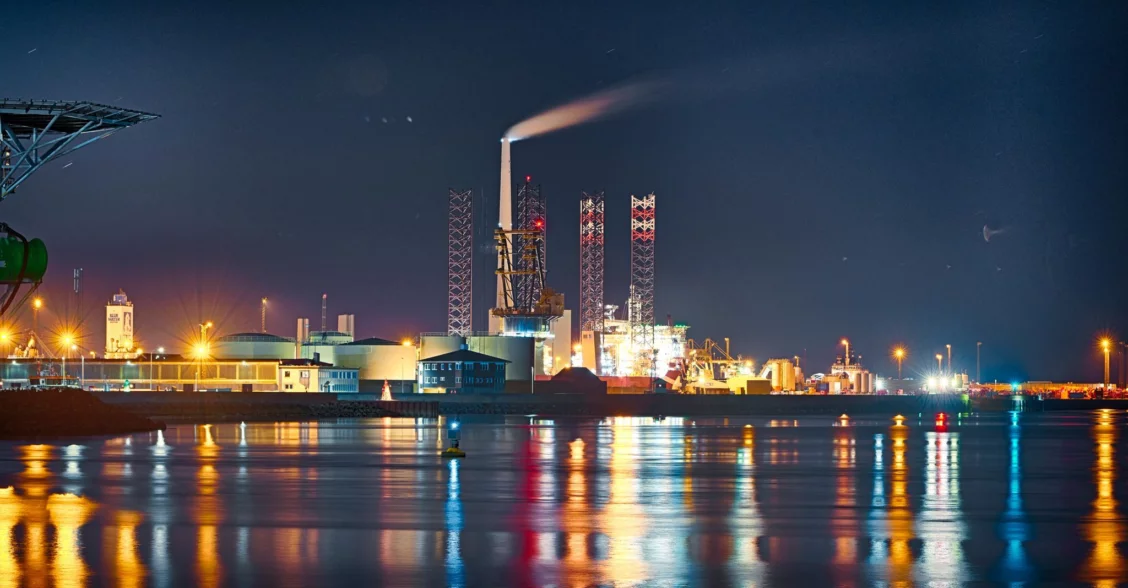Port Esbjerg aims to reduce light pollution in support of the Mandø Dark Sky project
The island of Mandø in the Wadden Sea is one of the best places for natural darkness in Denmark, and Esbjerg Local Authority is currently working to achieve Dark Sky certification for the area. The background is a joint project between Denmark, the Netherlands and Germany to obtain World Heritage status for the Wadden Sea. The latest agreement between the parties involves preserving natural darkness, among other things. Both Germany and the Netherland have already launched Dark Sky projects, and now Denmark has joined in.
A Dark Sky facility at Mandø will give the local population and visitors the opportunity to experience the impressive constellations in the night sky that are so clearly visible from Mandø, thanks to the darkness in the area. Dark Sky is not only a special attraction, it also helps draw attention to the growing problem of light pollution worldwide. In fact, this is where Port Esbjerg will step in and give the local authority a helping hand.
“It gets very dark on Mandø, but the port of Esbjerg is one of the sources of light pollution on the island. Being a work site, there is activity at the port 24/7, so we plan to team up with the people at Port Esbjerg to see what we might do about the light pollution, so everyone will win,” says Christina Føns, Environmental Manager at Esbjerg Local Authority.

It gets very dark on Mandø, but the port of Esbjerg is one of the sources of light pollution on the island. Photo: Christer Holte
The Dark Sky Mandø project is not dependent on a reduction of light pollution at the port of Esbjerg, but hopefully the collaboration between Port Esbjerg and the local authority can provide inspiration to ports in other countries.
“We’re still at a very early stage, and we don’t know how it’ll play out. On the other hand, it will be exciting to see if what we come up with at the port of Esbjerg may serve as inspiration to other ports working with light pollution. We have the general impression that more light is being used at the port than is strictly necessary and that there are instances of excessive use of powerful lighting. However, light pollution is also about directing light to where it’s actually needed,” says Føns.
The work on light pollution at the port is not only relevant for the Dark Sky project, but also as part of Port Esbjerg’s sustainability strategy. Reducing light pollution has the extra benefit of reducing the energy consumption and thus lowering carbon emissions at the port.

Reducing light pollution has the extra benefit of reducing the energy consumption and thus lowering carbon emissions at the port. Photo: Christer Holte
Port of Esbjerg to get shore power supply
This autumn, ships calling at the port of Esbjerg will be able to get electricity from a flexible shore power supply, and more installations are underway. For some time, there have been requests for a shore power supply at the port, and now that the technology is available and there is a demand for the service, the project has become a reality. Demand for the service comes from offshore oil/gas and offshore wind vessels.
Among the technical challenges in supplying shore power is the fact that most ships have a 60Hz grid, while power at the port of Esbjerg is 50Hz. To eliminate this problem, Port Esbjerg has acquired a frequency converter with four 250 Amp sockets distributed on three tapping points. This means either one large, two medium-sized or four small ships can tap into the shore power supply at any one time. In other words, several users can connect to this flexible facility at the same time.
“There are significant benefits from having a shore power supply, especially in terms of reducing noise and particle emissions. Also, the power to be supplied at the port of Esbjerg will be generated by Danish wind farms in the North Sea, so providing this service is good for the environment. Furthermore, thanks to technological innovation, energy supplied by on-shore stations can compete with energy from other sources,” says Jesper Bank, CCO at Port Esbjerg.
Three tapping points are to be installed initially but plans for additional facilities are already on the table.
“We’re currently in discussions with several of our customers at the port regarding their requirements for additional shore power supply stations,” says Bank.

This will be the design of the shore power supply. Illustration: Port Esbjerg
Go to overview

